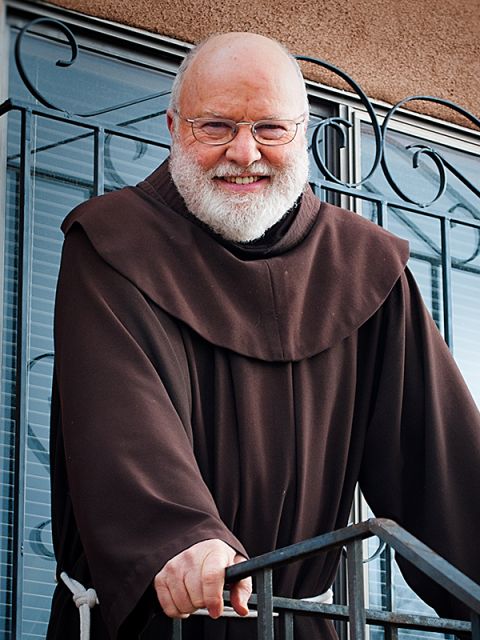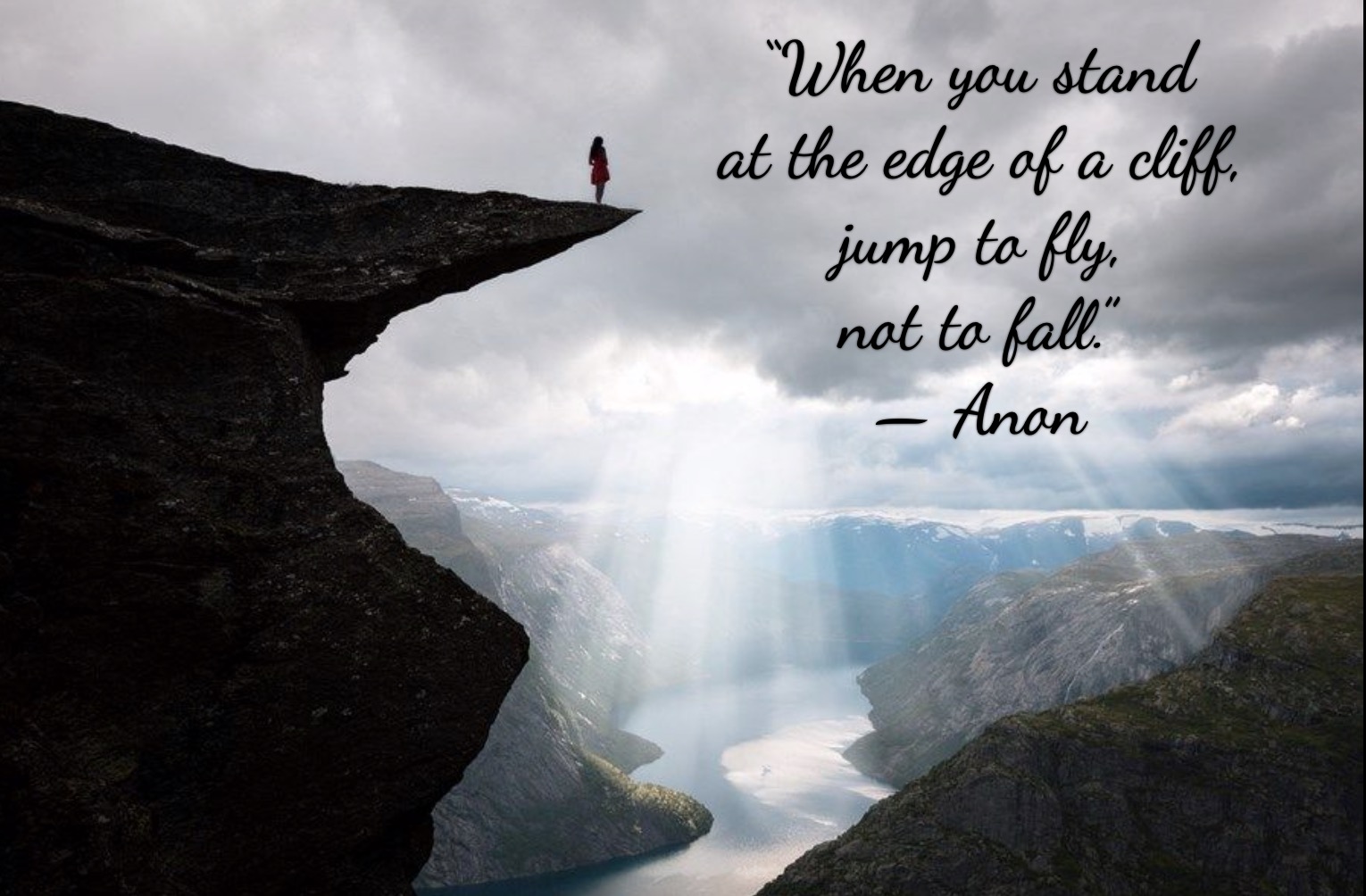“Evil can hide in systems much more readily than in individuals.”
Richard Rohr writes this in reference to Francis and Clare of Assisi, who he says “found both their inner and outer freedom by structurally living on the edge of the inside of church and society”.
I feel that this edge-ness has a lot to do with where we are as a world right now, in relation to racial justice, COVID, and climate change. I will attempt to explain.

Rohr goes on to say:
“By “living on the edge of the inside” I mean building on the solid Tradition (“from the inside”) from a new and creative stance where you cannot be co-opted for purposes of security, possessions, or the illusions of power (“on the edge”).”
In other words, they had one foot in each of the two worlds: they had one foot in the old order, because if they left that order entirely, they couldn’t be a force for change. But they also had one foot in the unknown realm of newness, outside of the status quo, from which they could objectively see the strengths but also very much the weaknesses of the old system, and start to imagine a better new world.
The problem for people who have both feet squarely in the old order is that they often can’t see the need or potential for a new and better way of doing things. While Otto Scharmer says (in the downloadable pdf of the introduction to his excellent book, Leading from the Emerging Future) that the old civilisation is “collectively creating results that nobody wants”, I don’t think it’s quite accurate to say that nobody wants them. There are clearly some somebodies who do want those results, because the results suit them just fine, thank you very much.
Systems often embed old and outdated moral codes. We inherited them from an era when there was less awareness and less respect for the rights of our fellow humans and of nature, but because we are so embedded in the systems, and “it has always been that way”, those of us who have nothing to complain about are often blind to their flaws. If the injustices are not part of our daily experience, we don’t see what we don’t see.
A quote that has been widely used in the context of racial bias in the American (so-called) justice system is, “the system isn’t broken; it was built to work this way”. This is how faulty old systems like discrimination based on race or gender, or rapacious forms of capitalism, manage to perpetuate themselves. The people who have acquired power within that system have less than zero incentive to change the system, and the people who want to change it don’t have the power to do so.
Conversely, nor will having both feet in the new order generate impetus for change. It may enable enlightened individuals to live in an off-grid utopia, but if they have totally opted out of the mainstream to sit on a metaphorical mountaintop, their influence will be mystical rather than material.
In a blog post I wrote in June about Fairness, Floyd, Cooper, Cummings and Chaos, I mentioned that, according to chaos theory, change requires both a shock to the existing system, plus a powerful point attractor outside the existing regime. But there is such a thing as “too far outside” the existing regime. If those inside the regime can’t even see the new alternative, they’re not going to gravitate towards it in the numbers necessary for it to gain traction.
And so we come back to the edge. One foot in the old, one foot in the new.
Mitchell Waldrop in his book Complexity: The Emerging Science at the Edge of Order and Chaos describes this edge thus:
“Right between the two extremes [order and chaos] … at a kind of abstract phase transition called the edge of chaos, you also find complexity: a class of behaviours in which the components of the system never quite lock into place, yet never dissolve into turbulence, either. These are the systems that are both stable enough to store information, and yet evanescent enough to transmit it. These are systems that can be organized to perform complex computations, to react to the world, to be spontaneous, adaptive, and alive.”
Put more simply, the edge is where the cool stuff happens – creativity, imagination, innovation, envisioning.
 If chaos theory is a bit too cerebral for your tastes, Sharon Blackie puts the same idea beautifully and in more embodied fashion in If Women Rose Rooted:
If chaos theory is a bit too cerebral for your tastes, Sharon Blackie puts the same idea beautifully and in more embodied fashion in If Women Rose Rooted:
“I have always been drawn to the edges of things, the places where two things collide. Where bog borders riverbank, where meadow merges into forest. Where you stand in the margins of what is behind you and look out across the threshold of the future. The brink of possibilities – will you cross? Edges are transitional places; they are also the best places from which to create something new. Ecologists call it the ‘edge effect’: at the convergence, where contrasting ecological systems meet and mingle… Those of us who live here must be comfortable with storms and with change, for it is on these unsettled, unsettling edges that we will hear the Call which launches us on our journey. And though we can never quite be sure what that journey will involve, we know that new possibilities may be created only if we surrender to uncertainty.”
And with that last word, she alerts us to the dangers. Edges may be where the cool stuff happens, but they are also, well, more edgy.
“When we heed that Call and step off the edge, thinking to firmly set foot on the path which lies ahead of us, to strike out confidently on our new pilgrimage – we may instead find ourselves losing our footing, plummeting down into the dark.”
And that is the invitation of these times, as we emerge (for now) from COVID lockdown, with fundamental problems being (re)surfaced, demanding resolution. We know that evil is hiding in many of our old systems and that, in fact, those systems were built to work that way. A hasty retrofit of wokeness just isn’t going to do the job.
The good news, as I see it, is that while evil may hide in systems, solutions hide in communities. When we bring together small groups to talk openly in an atmosphere of trust, even if that trust has to be slowly earned over time, we start to find a way forward towards a world that works for all.
“Never doubt that a small group of thoughtful, committed citizens can change the world; indeed, it’s the only thing that ever has.” — Margaret Mead
We have to stand on that scary edge, with one foot in the old order, and one planted firmly – or more likely, precariously – in the new. And together we have to hoist that edge onto our collective shoulder, and drag it, maybe bending under its weight, towards a new, better, more just and equitable horizon.
We don’t know what the future holds. So we have to create the path by walking – and talking – together.

